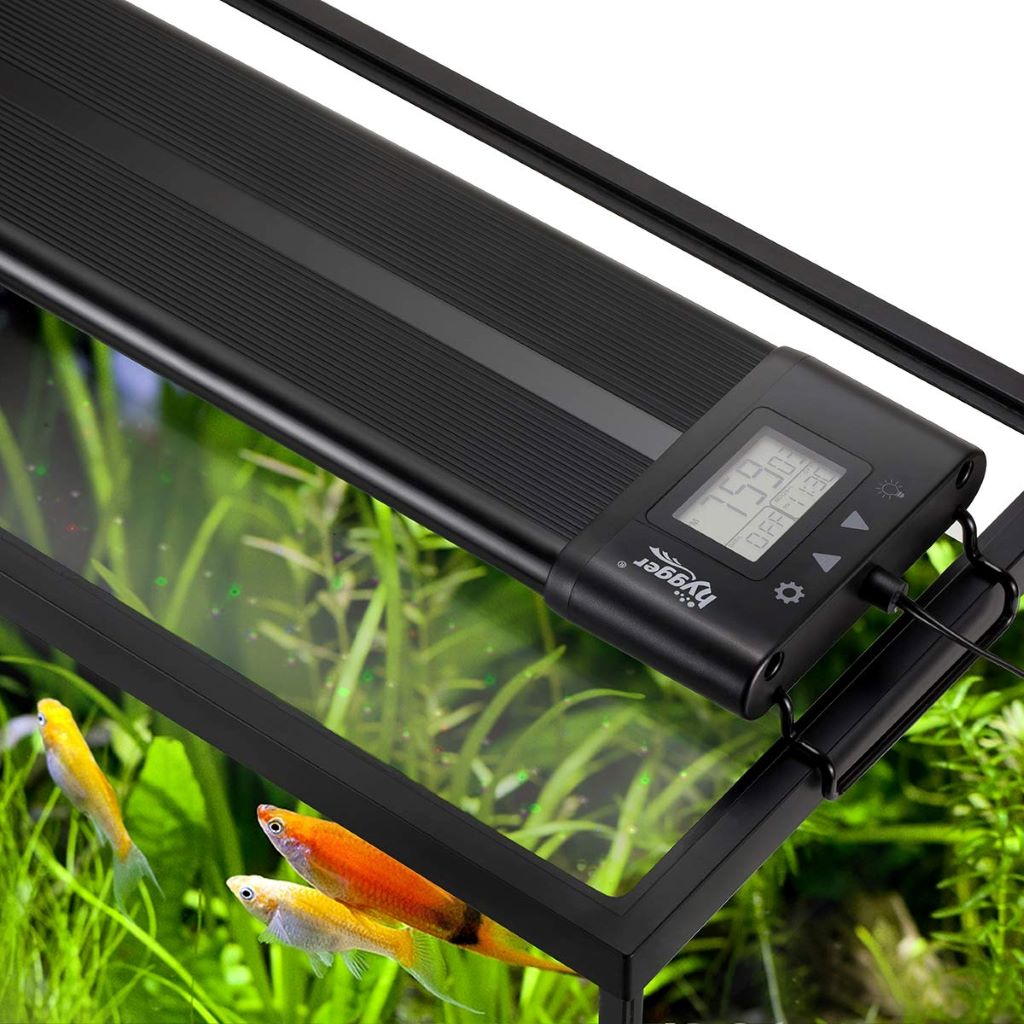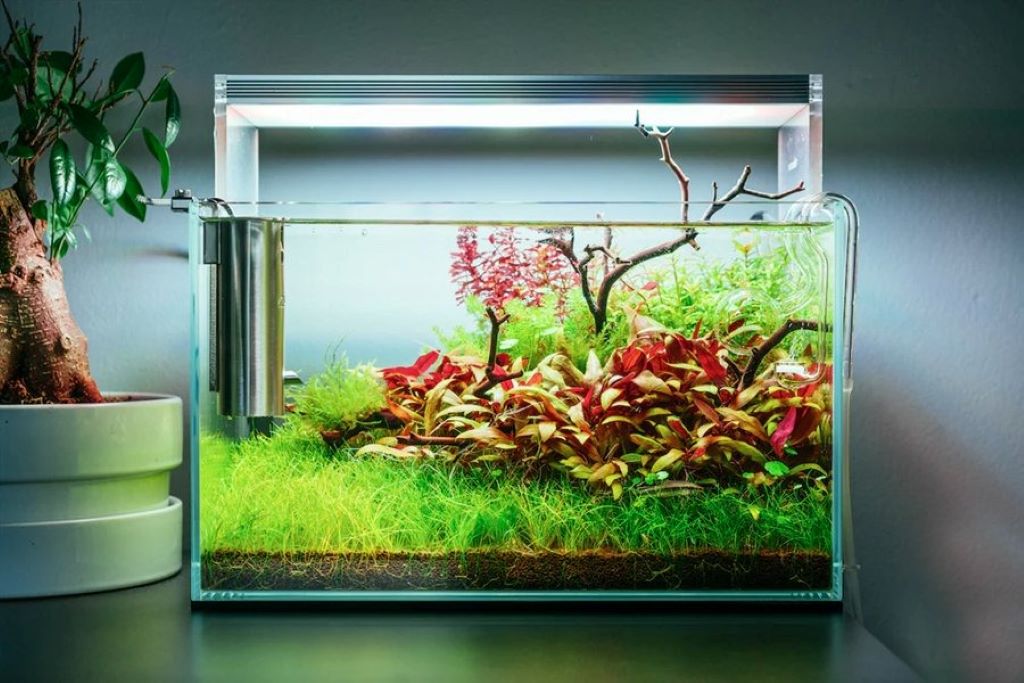A beautifully lit aquarium is a captivating sight, showcasing the vibrant colors of your fish and aquatic plants. But what happens when those mesmerizing LED lights start to flicker? Suddenly, your tranquil underwater world seems a little less serene. Flickering aquarium LED lights can be more than just an annoyance; they can signal underlying issues that might affect the health of your aquatic inhabitants.
This comprehensive guide delves into the common causes behind this frustrating problem and provides you with a step-by-step approach to troubleshoot and resolve it. We’ll also answer some frequently asked questions to help you maintain optimal lighting conditions for your thriving aquatic ecosystem.
Understanding the Culprits Behind Flickering Lights
Before we dive into the solutions, it’s crucial to understand why your aquarium LED lights might be flickering. Here are some of the most common culprits:
-
Loose Connections:
One of the simplest and most common reasons for flickering is a loose connection. This could be at the power source, the switch, or within the light fixture itself. Over time, vibrations or accidental bumps can loosen connections, leading to intermittent power supply and flickering.
-
Faulty Driver:
LED lights require a driver to convert AC power from your outlet to the DC power that LEDs need to function. A malfunctioning driver can cause inconsistent power delivery, resulting in flickering, dimming, or even complete failure of the lights.
-
Water Damage:
Water and electricity are a dangerous mix. If water has seeped into the light fixture, it can cause short circuits and corrosion, leading to flickering and other electrical problems. This is particularly common in lights that are not properly sealed or are positioned too close to the water surface.
-
Incompatible Dimmer:
If you’re using a dimmer switch with your LED lights, ensure it’s compatible with the type of LEDs you have. Using an incompatible dimmer can cause flickering, buzzing, or even damage the lights.
-
End of Lifespan:
While LEDs are known for their longevity, they don’t last forever. As LEDs approach the end of their lifespan, they may start to flicker, dim, or change color.
-
Overheating:
LEDs generate heat, and if the heat is not adequately dissipated, it can cause the lights to flicker or fail prematurely. This is more common in poorly ventilated fixtures or lights that are enclosed in a canopy.
-
Power Surges:
Sudden spikes in voltage can damage the LED driver or the LEDs themselves, leading to flickering or complete failure.
Troubleshooting Steps: Reclaiming Your Aquarium’s Glow

Now that you have a better understanding of the potential causes, let’s explore how to troubleshoot and fix those flickering LED lights:
-
Check the Obvious:
- Power Supply: Start with the basics. Ensure the light is plugged in securely and the outlet is working. Test the outlet with another device to confirm it’s supplying power.
- Switch: If your light has an on/off switch, check that it’s functioning correctly and making good contact. Sometimes, a simple flick of the switch can resolve the issue.
- Loose Connections: Carefully examine the connections within the light fixture itself. Look for any loose wires or corroded contacts. If you find any, tighten them or clean the contacts with a dry cloth.
-
Inspect the Driver:
- Visual Inspection: Look for any signs of damage on the driver, such as burn marks, bulging capacitors, or loose components. If you notice anything unusual, the driver likely needs replacement.
- Testing with a Multimeter: If you’re comfortable working with electronics, you can use a multimeter to test the driver’s output voltage. Refer to the manufacturer’s specifications for the correct voltage. If the output is inconsistent or significantly different from the specified value, the driver is faulty.
-
Assess for Water Damage:
- Visual Inspection: Carefully examine the light fixture for any signs of water ingress. Look for water droplets, condensation, or corrosion on the internal components.
- Drying: If you find evidence of water damage, unplug the light immediately and allow it to dry completely. You can use a hairdryer on a low setting to speed up the drying process. Once dry, inspect the fixture again for any signs of damage.
-
Verify Dimmer Compatibility:
- Check Specifications: Consult the dimmer switch and LED light documentation to ensure they are compatible. Look for phrases like “LED compatible” or information about the dimmer’s wattage capacity.
- Test with Another Dimmer: If you suspect incompatibility, try using a different dimmer switch that you know is LED compatible.
-
Consider LED Lifespan:
- Age of the Lights: If your LED lights are several years old, they might be nearing the end of their lifespan. Consider replacing them with new ones.
- Gradual Dimming: A gradual decrease in brightness over time can also indicate that the LEDs are aging.
-
Address Overheating:
- Ventilation: Ensure the light fixture has adequate ventilation. If it’s enclosed in a canopy, make sure there are vents or openings for heat to escape.
- Reduce Ambient Temperature: If the aquarium is located in a particularly warm environment, try to lower the ambient temperature to reduce the heat stress on the LEDs.
-
Protect Against Power Surges:
- Surge Protector: Plug your aquarium lights into a surge protector to safeguard them from voltage spikes.
- Whole-House Surge Protector: For comprehensive protection, consider installing a whole-house surge protector to protect all your electronic devices.
Important Note: If you’re uncomfortable working with electrical components or suspect a serious issue, it’s always best to consult a qualified electrician or aquarium lighting specialist.
Preventive Measures: Keeping Your Lights Shining Bright
Prevention is always better than cure. Here are some proactive steps you can take to minimize the risk of flickering LED lights and ensure their longevity:
- Regular Inspections: Periodically inspect your aquarium lights for any signs of wear and tear, loose connections, or water damage.
- Proper Installation: Ensure your lights are installed correctly and securely. Follow the manufacturer’s instructions carefully.
- Quality Products: Invest in high-quality LED lights from reputable brands. These lights are typically more reliable and durable.
- Water Resistance: Choose lights with a high Ingress Protection (IP) rating, especially if they are positioned close to the water surface. This rating indicates the level of protection against dust and water.
- Stable Power Supply: Ensure a stable power supply to your aquarium lights. Avoid overloading circuits or using extension cords.
Popular FAQs: Illuminating Your Concerns
-
Why are my new LED lights flickering?
Even new LED lights can flicker. Check for loose connections, dimmer compatibility, or a faulty driver. If the problem persists, contact the manufacturer or retailer.
-
Can flickering LED lights harm my fish?
While occasional flickering might not cause significant harm, persistent flickering can stress your fish. Fish are sensitive to changes in their environment, and constant fluctuations in light intensity can disrupt their behavior and overall health.
-
How long do aquarium LED lights last?
High-quality LED lights can last for several years, typically between 30,000 to 50,000 hours. However, their lifespan can be affected by factors like heat, humidity, and usage patterns.
-
Can I repair my LED light fixture myself?
If you have some electrical knowledge and are comfortable working with electronics, you can attempt simple repairs like tightening connections or replacing the driver. However, for more complex issues, it’s best to seek professional help.
-
How do I choose the right dimmer for my LED lights?
Look for dimmers specifically designed for LEDs. Check the dimmer’s wattage capacity and ensure it is compatible with the type of LEDs you have. If unsure, consult an electrician or lighting specialist.
Conclusion: A Brighter Outlook for Your Aquarium
Flickering aquarium LED lights can be a frustrating problem, but with a systematic approach to troubleshooting, you can often identify and resolve the issue. By understanding the common causes, following the steps outlined in this guide, and taking preventive measures, you can ensure your aquatic environment remains beautifully illuminated and your fish thrive in their vibrant underwater home.
Remember, a well-lit aquarium is not just aesthetically pleasing but also essential for the health and well-being of your aquatic life. So, don’t let flickering lights dim the beauty of your underwater world. Take charge, troubleshoot the problem, and let your aquarium shine bright once again!
Read More:




